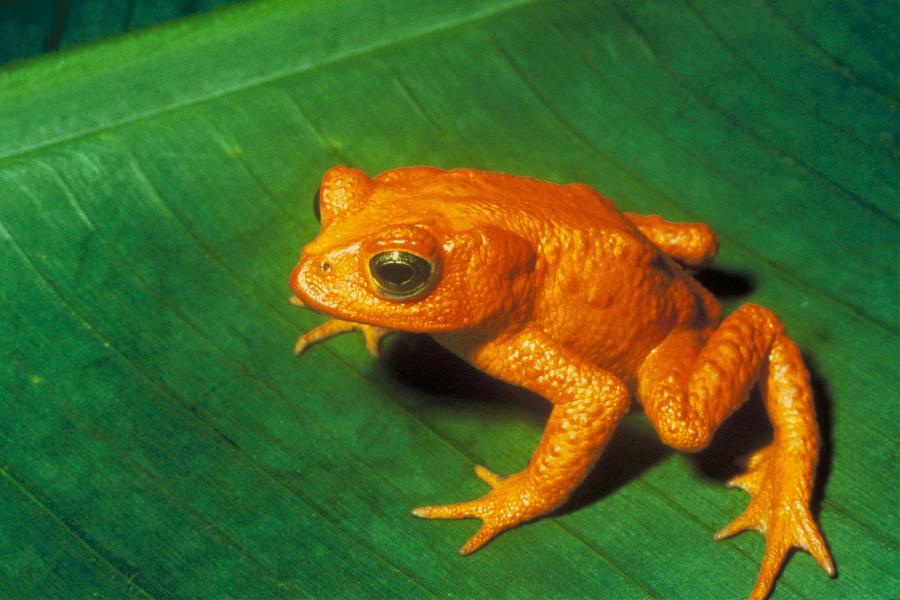What emotions do these images of animals evoke in you?


Golden toad,
1980
Charles H. Smith
A male Golden toad stands on a leaf.
More about this image-
Bright emotions
-
Not at all Extremely
-
-
Quiet emotions
-
Not at all Extremely
-
-
Heavy emotions
-
Not at all Extremely
-
-
Sombre emotions
-
Not at all Extremely
-
Species: Golden toad, Incilius periglenes
Location and habitat: Costa Rican pygmy cloud forest
Conservation Status: Extinct

Compare yourself to others
Choose different variables below, and see the patterns of response reflected in the circle of emotion above. Your responses are the coloured wedges. Others' responses are averaged in the spider graph of lines and dots.

Creator: Charles H. Smith
Date: 1980
Copyright: Creative Commons
This exquisite and recently extinct golden toad has become something of a 'posterchild' for amphibian decline. These toads once inhabited El Yunque National Forest, Costa Rica, specifically a small pocket of pygmy cloud forest. Such ecosystems are rare, requiring the combination of high elevation, much humidity and poor soil conditions, with this coming together to make a whole forest of natural 'bonsai' trees, an elfin landscape inhabited by strange small creatures, like the Golden toad. This once abundant, if highly localised, true toad was first described by a scientist in 1966, and last seen in 1989, despite many surveys seeking to find traces of it, with the IUCN declaring it extinct in 2004.
As a posterchild for amphibian decline, the Golden toad is not something of an ambassador for its kingdom of life. The second Global Amphibian Assessment, completed in 2022, lists no less than 8,011 species of amphibian as endangered, with that coming to 40.7% of all known amphibians, thus making them the most precarious of vertebrates. Habitat destruction and increased flow of pathogens have contributed to this decline, with evidence that ongoing climatic instability has driven 39% of amphibians being added to this threatened list since 2004, with the number set to increase substantially as global temperatures continue to rise.
Male Golden toads, like the one pictured above, were a brilliant golden colour, with their colouration contrasting with the larger -- and much less common -- females, who were charcoal dark with yellow lines. These animals lived the majority of their lives hiding out in moist burrows beneath the elfin forest floor. They would emerge in the autumnal wet season and quickly set about engaging in mass toad orgies, spawning thousands of fertalised eggs in rainwater puddles that pooled among the roots of bonsai-ed trees. These puddles proved vulnerable to shifting weather patterns made more extreme by global heating. The extreme drought years of 1987-88 no doubt took a major toll on the toads, with the IPCC confirming that the climate crisis was 'implicated as a key driver' in its path to extinction. This key driver served to exacerbate other factors that may have contribute to their demise, including a possible fungal infections and/or airborne pollution, with the precise relationship between these factors being debated within a slice of herpetologists (amphibian scientists), with competing interpretations for how every member of this lifeform died out.
The Golden toad is an example of a unique species that has been annihilated by human activity: another notch carved into the grim belt of the 6th Great Extinction.





